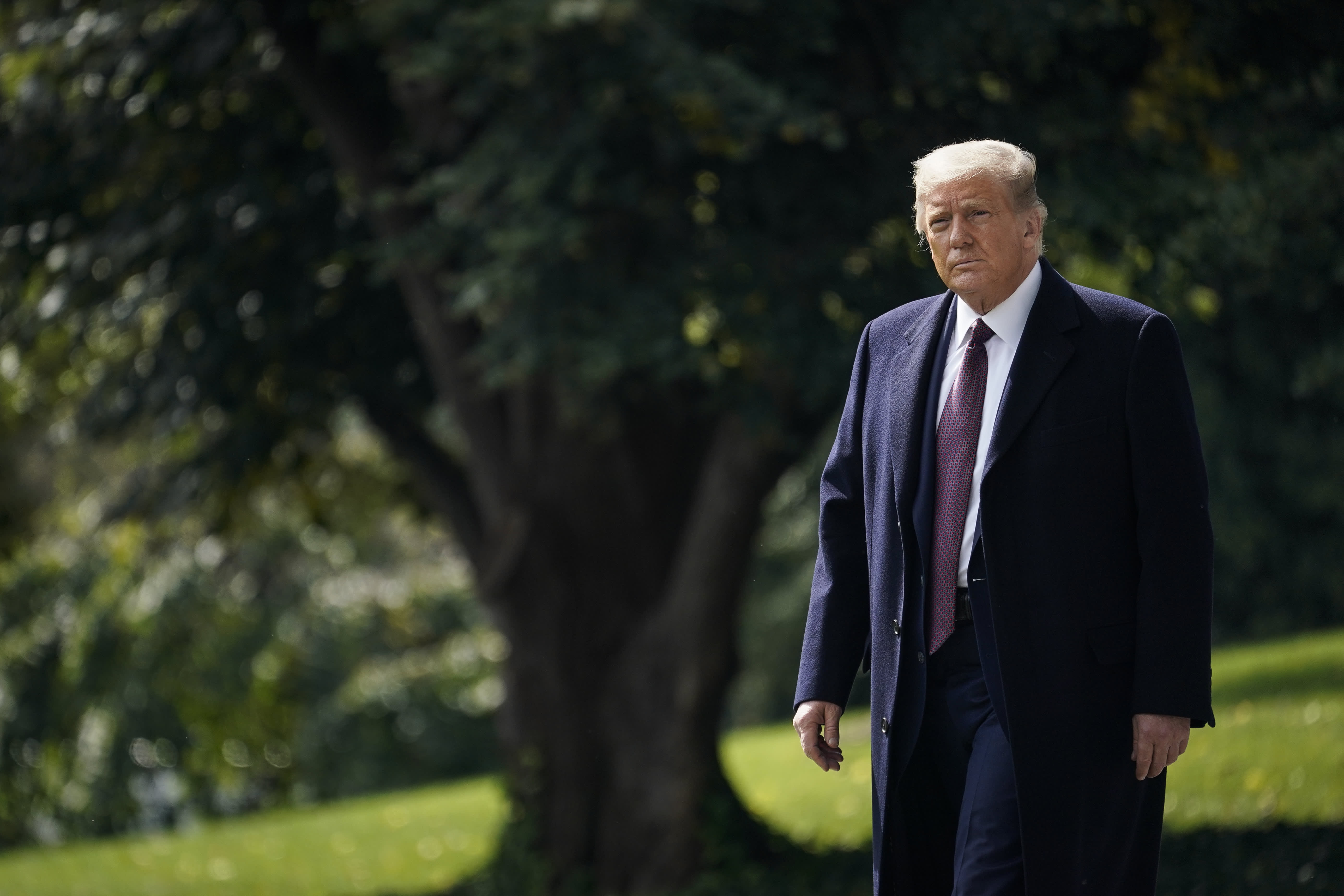U.S. President Donald Trump walks to Marine One on the South Lawn of the White House on October 1, 2020 in Washington, DC.
Drew Angerer | Getty Images
It appears unemployed workers won’t get another boost in their weekly benefits any time soon, after President Donald Trump pulled officials out of negotiations on a fifth round of coronavirus relief Tuesday.
The move abruptly dashed hopes of a deal on items such as enhanced unemployment benefits after weeks of talks between the White House and top congressional Democrats seemed to be bearing some fruit.
Absent more aid, jobless Americans will be living off their current allotment of benefits from the state or federal government. In some cases, that amounts to just $5 a week.
Even that money will disappear by the end of the year for millions of workers without more legislation — leaving them with no income if they’re unable to find another job.
“It appears we’re not getting another fiscal package over the next few months at least,” said Ernie Tedeschi, a policy economist at Evercore ISI.
$5 a week
More than 26 million Americans are collecting unemployment benefits, according to the Labor Department. Nearly seven months into the economic crisis caused by the coronavirus pandemic, more than 1 million are filing new applications for benefits each week.
More from Personal Finance:
Unemployment benefits are less than minimum wage in many states
Six months into the pandemic, some are still waiting for benefits
Democrats and GOP still fighting over $600 jobless benefits
On average, states paid $305 a week (about $1,220 a month, before tax) in unemployment insurance to workers in August, according to Labor Department data.
Some paid much less. Louisiana and Mississippi, for example, paid just over $180 a week ($720 a month) — the lowest average among the states.
However, some workers get less still. States pay unemployment benefits within a range, between a minimum and maximum weekly amount. Those ranges vary significantly by state.
In Hawaii, for example, that minimum is $5 a week. Just nine — Arizona, Kansas, Michigan, Montana, New Jersey, New York, Ohio, Oregon and Washington state — pay a minimum over $100 a week.
The U.S. average of states’ weekly minimum benefits is $61 a week (approximately $244 a month).
‘Hard to live’
Unemployment benefits replaced about 39% of lost wages for the average American in the second quarter this year, according to Labor Department data.
“It’s pretty hard to live on that for a long period of time,” said Eliza Forsythe, an assistant professor and labor economist at the University of Illinois.
The expiration of these measures likely means a severe cut in household income for millions of people, according to economists. Meanwhile, there are two unemployed workers for every job opening, according to the Bureau of Labor Statistics, and childcare responsibilities and health risks may prevent some from going back to work.
“Very few people can stay in their same housing with all their same debts and obligations if they’re only earning 35% to 40% of what they were earning before,” Forsythe said.
Piecemeal approach
House Speaker Nancy Pelosi, D-Calif., at the Russell Senate Office Building in Washington, on Oct. 7.
Stefani Reynolds/Bloomberg via Getty Images
It’s unclear whether enhanced unemployment benefits would be among these potential piecemeal items.
The White House doesn’t expect Democrats to sign on to this approach with unemployment benefits, according to a senior administration official. The parties have thus far supported a different weekly subsidy amount.
A spokesperson for Pelosi didn’t return a request for comment.
Fiscal cliff for the self-employed
Meanwhile, a fiscal cliff looms for millions of unemployed workers at the end of the year.
The Pandemic Unemployment Assistance program for self-employed, gig, freelance and other workers, who are generally ineligible for state unemployment insurance, ends after December. It was created by the CARES Act.
Without additional legislation, these workers will no longer receive any jobless benefits.
“When we go over this cliff on Dec. 31, the people affected by it generally have no recourse on the other side,” Tedeschi said. “That population is just cut off.”
The CARES Act also extended state unemployment insurance benefits by up to 13 weeks, on top of the traditional six months. That program, Pandemic Emergency Unemployment Compensation, also ends after December.
That will impact an estimated 10 million to 15 million people in those programs in December, according to Tedeschi.
